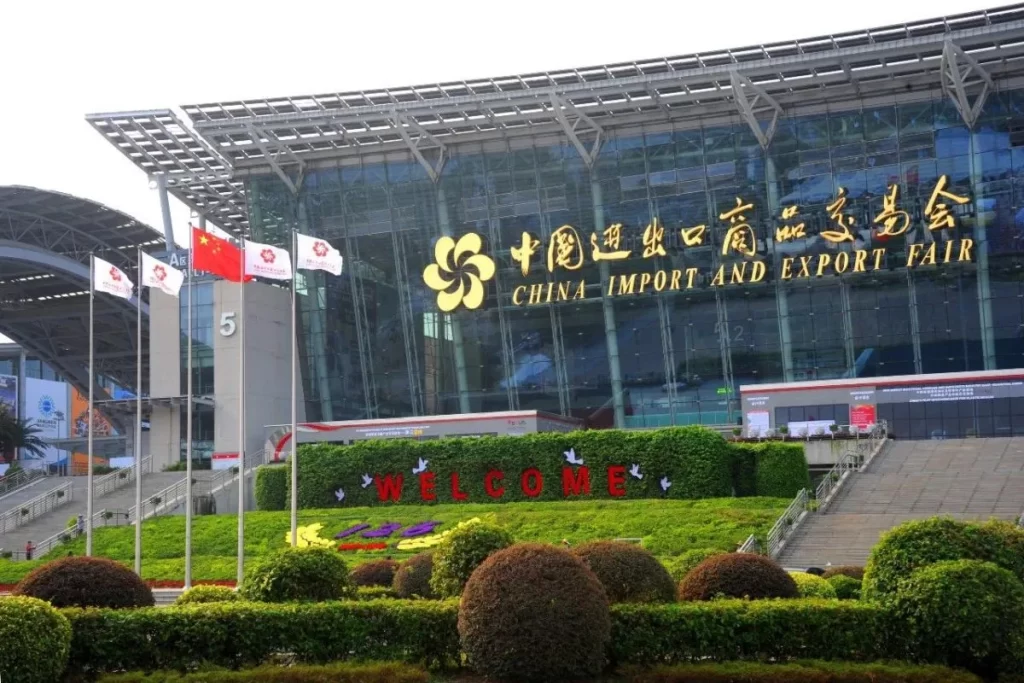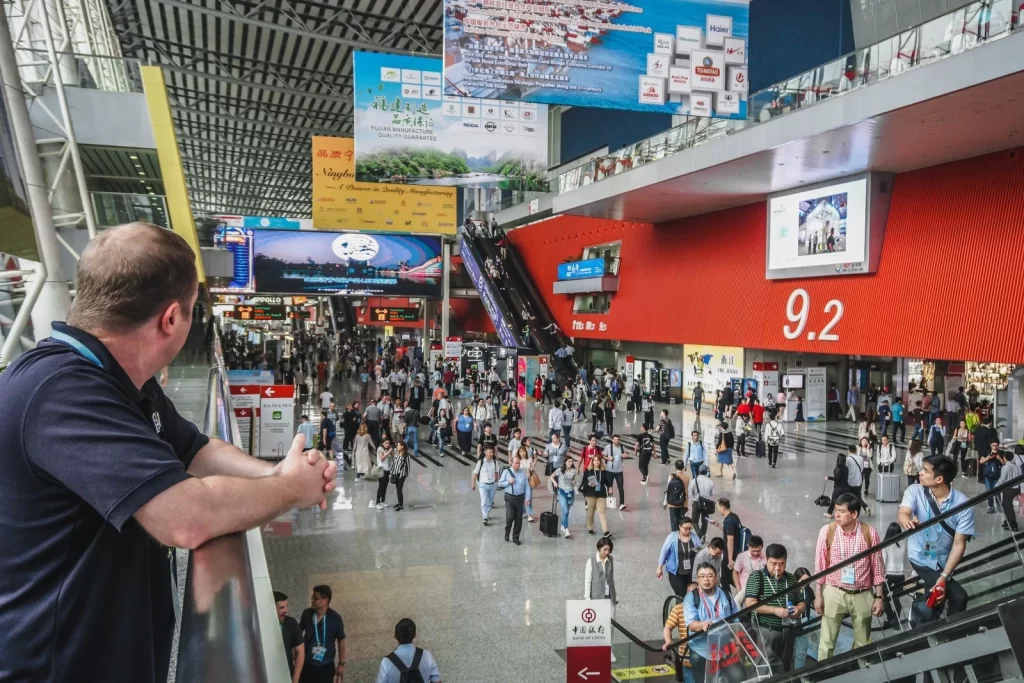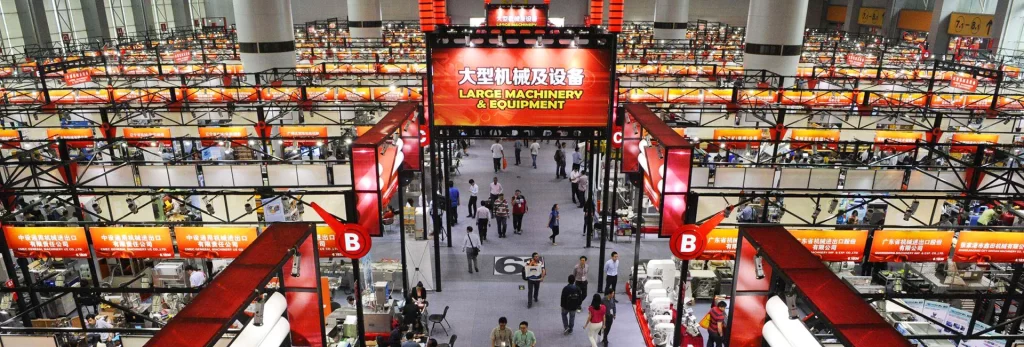The Canton Fair or the China Import and Export Fair is one of the biggest channel of trade fairs in the international market. It is an international event held every half year in Guangzhou and many exhibitors and buyers attend the fair.
That is why, coming to the China Fair is impossible, as it provides the targeted companies with some benefits for widening the targeted market.
It is important to note some of the trends that may help one fully benefit from the China Fair. Trends such as changes in technology, sustainability, and consumer preferences are some of the factors that have brought a change in the environment of this significant event.
Such information and tips in this guide also cover advice on the exhibition hall, pre-fair and post-fair activities. Whether you are a first-time participant or this is your third or fourth time attending this China Fair, this guide will improve your outcome thereby facilitating the achievement of your business.
- Chapter 1: Introduction to the China Fair
- Chapter 2: Opportunities at the China Fair
- Chapter 3: Key Trends at the China Fair
- Chapter 4: Having a Closer Look at the China Fair
- Chapter 5: Upcoming Fairs from August to December
- Chapter 6: Pre and Post Preparation of the China Fair
- Chapter 7: Maximizing Your Experience at the China Fair
- Chapter 8: Future of the China Fair
- Chapter 9: FAQS About Canton Fair
Chapter 1: Introduction to the China Fair
1. What is the China Import and Export Fair?

Canton Fair which is fully known as the China Import and Export Fair is the single largest and multisectioned trade fair of China. As the trading platform offering buyers from overseas to Chinese manufacturers and suppliers, its function takes on that of the international market.
It is an event that is held twice a year and is held in Guangzhou and is further segmented into three levels covering electronics and machinery, textiles and garments, and the third level is consumer products.
2. History and Importance of the China Fair
When conducted annually it has grown to be among the largest trade fairs in the entire world and was started in 1957. He used it to emphasize the rapid rate of industrial and economic growth in China and to paint a picture of the country’s export capability. This has amassed millions of users over the years and has been used to infer China’s trading behavior.
3. Major Dates and Locations

It is a bi-annual fair conducted in “Guangzhou”, at the “China Import and Export Complex”. The spring session is normally taken from April to May while the autumn session is taken from October to November. The other important fairs are the ‘‘Yiwu Commodities Fair’’ and the ‘‘Shanghai Fashion Week’’ that also is held in some of the strategic cities in China.
Chapter 2: Opportunities at the China Fair

1. Business Networking at the China Fair
People who attend the Canton Fair are free to conduct their kind of ‘business mileage’ with some of the world’s prominent industry tycoons, sellers, and buyers. The fair is aimed at the promotion of overseas cooperation, providing all attendees the opportunity to establish partnerships as well as to find products for their markets.
2. Investment Opportunities
Apart from trade prospects, the fair provides information on “investment prospects” in various fields such as technology, production, and renewable energy sources. It becomes easier for investors to learn about Chinese innovations as well as new trends that are likely to dominate cross-border business.
3. Export and Import Prospects
This factor risks making the Canton Fair a glutton for “export and import opportunities” that firms can use to pierce new markets. It has the function in facilitating global buyers with the opportunity to source quality and cheap Chinese products, as well as giving Chinese manufacturing companies a chance to go global.
Chapter 3: Key Trends at the China Fair

1. Rising Market Trends
Some of the recognizable trends that have been showcased in the latest Canton Fairs are what the market demands, especially the ascendant markets such as e-commerce, renewable energy, and smart manufacturing that is driven by Artificial Intelligence. Such trends define China’s emerging-market strategy, which looks into the future needs of the global markets.
2. Technological Innovations
The fair highlights ‘technical trends’, ranging from the smart home sector to robotics and automation technology. Some of them showcase the state-of-the-art that is putting China on the modern technology map.
3. Sustainability and Green Products
Sustainability has a considerable emphasis in recent Canton Fair exhibitions where there are shifts towards ‘green’ products and sustainability solutions. Among the relatively numerous representatives of business at the fair, it is possible to see the determination of many companies to showcase products that meet modern indicators of sustainable development, for example, solar power plants and lightweight environmentally friendly packaging.
Technology-at-the-China-Fair

Chapter 4: Having a Closer Look at the China Fair
1. Tips for First-Time Attendees
The preparation of first-time attendees is always important. Get an idea of the geographical distribution of the fair’s floor area and identify the specific exhibitors that will be crucial to visit, then set appointments to work around the crowd. Good footwear, business cards, and a sound plan will assist in getting the most out of your trip.
2. How to Perfectly Plan Your Visit
Planning is crucial. This is based on an analysis of the list of exhibitors, the setting of objectives, and the halls where you should focus. Do not forget to go to the seminars that are most pertinent to the discipline and distribute some time for panel discussions and, more so, time for the network.
Chapter 5: Upcoming Fairs from August to December
1. Brief Intro on All Fairs
Each month, a variety of fairs focus on different industries:
- August Fair: “All China Leather Exhibition” (Shanghai) – A key event for leather goods and fashion.

- September Fair: “Première Vision Shenzhen” – Focusing on textiles and fashion

- October Fair: “China Toy Expo” (Shanghai) – Asia’s largest toy fair.
- November Fair: “All In Print China” (Shanghai) – A major event in the printing industry.
- December Fair: “Hi & Fi Asia-China” (Shanghai) – Health and food ingredients fair.
2. Selection of the Right China Fair
Choosing the right fair depends on your industry focus. Research the specific exhibitions that cater to your business needs and align with your objectives.
Chapter 6: Pre and Post Preparation of the China Fair
1. Pre-Event Preparation
A few days to it you should be registered, have made your accommodation arrangements, and have the marketing material for display. Check-in advance the list of exhibitors and schedule a prior meeting.
2. During the China Fair
During the fair, be tactical. Participate in conversations with other exhibitors, sit in seminars, and jolt down important discussions. For this not to be disabled, it is advisable to remain well organized to manage your time effectively.
3. Post-Event Preparation
After the event, there is a need to engage in a follow-up of the leads and contacts. Check your notes and determine which of the connections is likely to give birth to new business deals. Coherent with general strategic tools and frameworks, check the profitability of the fair by comparing results to aims.
Chapter 7: Maximizing Your Experience at the China Fair
1. Significant Tools and Resources
Take advantage of the Canton Fair mobile application to facilitate the way one moves around the event, scheduling meetings, and identifying the exhibitors. Sales follow-up emails or telephone calls to firms that were not fully engaged during the fair could be made then from digital catalogs and directories.
2. Networking Strategies
Focus on building relationships. Stay in touch with potential partners and buyers to be able to talk to them and negotiate. Be present and proactive at the networking events and dinners organized during the fair.
3. Post-Fair Follow-Up
Writing thank you letters, and emails as well as finalizing with those with whom they had formed relationships at the fair. Try to keep up with your contacts through LinkedIn, or any other related business networks.
Chapter 8: Future of the China Fair
1. Upcoming Themes and Focus Areas
Subsequent fairs are expected to focus on “green technologies”, “artificial intelligence”, and “smart cities” as priorities of the world economy change to sustainable and innovative technologies.
2. Predictions for Future Trends
A more increased utilization of what has for some time now been referred to as virtual fairs and more general hybrid models that massively enable global access will be witnessed as a result of these advances in digital tools.
3. How to Stay Updated on China Fair Events?
Updates on fair dates can be obtained from the official websites of the fairs, newsletters, and trade associations. Subscribe to the latest release and the Chinese economic platforms and International Business and Trade institutions.
This guide aims to describe how to proceed in the China Fair successfully, how to get the most out of it, and how to take advantage of the opportunities in this global market.
